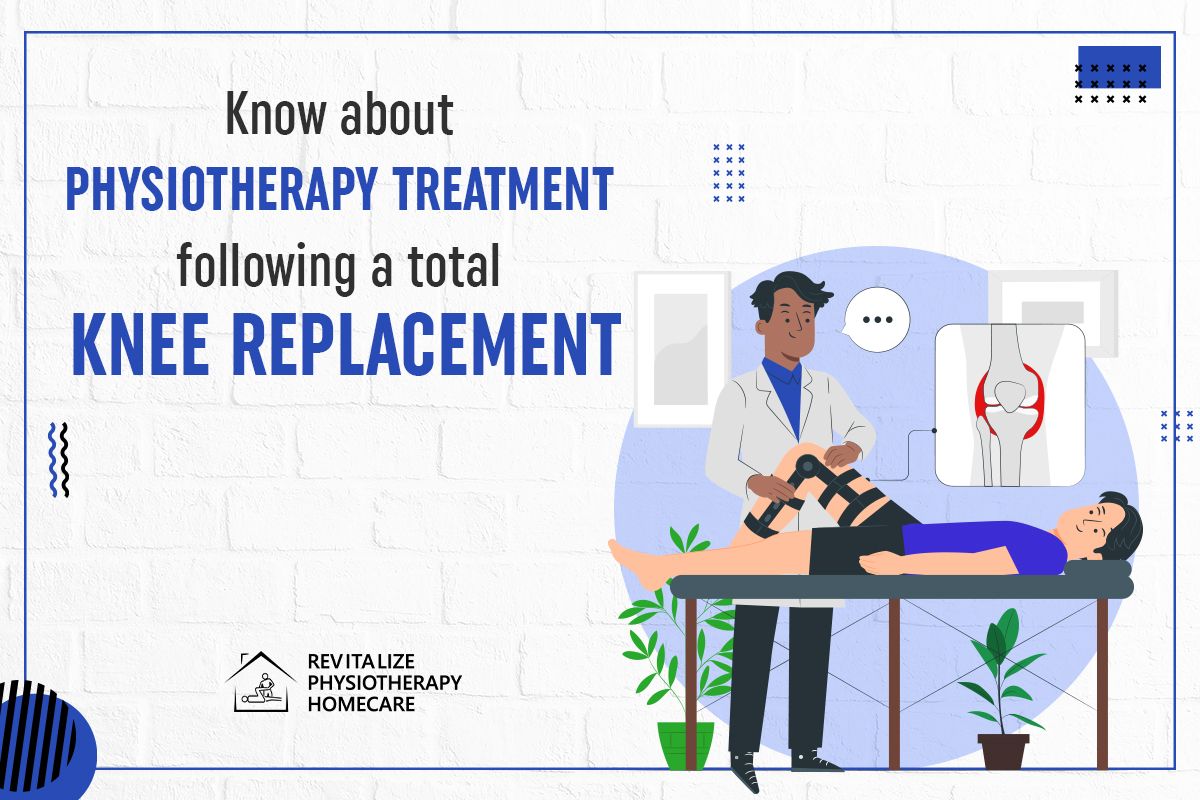Know About Physiotherapy Treatment Following a Total Knee Replacement
Whether in a career or for physical fitness, one needs to work hard and feel pain to get better. Because if there is no pain and discomfort, there can be no gain. Therefore, even if physical therapy hurts, recovering from a total knee replacement surgery is still crucial.
It enables you to gradually regain knee strength and mobility to get back to regular routines. Your knee's worn-out, diseased, and damaged portions will be removed during surgery and replaced with prosthetic implants. However, the success of a knee replacement depends in large part on recovery and rehabilitation.
Exercises used in the physiotherapy centre Brampton assist patients in regaining their ability to move and function normally. Depending on each individual's unique needs and general health, these workouts may differ from one another. Let's get deeper into physical therapy after total knee replacement to know how it helps.
What Kind of Physiotherapy Is Required and For How Long After A Total Knee Replacement?
Physical treatment time varies based on your body's response to recovery. You ought to prepare to begin physiotherapy sessions the day after your knee surgery. A skilled Brampton physiotherapist will assist you with the exercises.
You should do those exercises twice or three times a day for 20 to 30 minutes each time. Walk for 30 minutes to warm up before the workout. Keep going with the exercises until you have regained stability in your knee and range of motion.
You might need a few sessions with your therapist at first, but eventually, you'll be able to perform most of the exercises on your own. After surgery, physiotherapy should be continued for up to three months.
Protocol for Total Knee Replacement Rehabilitation
A rehabilitation protocol is a set of instructions that your orthopedic surgeon and physiotherapist follow. Following your knee surgery, this knee replacement treatment Brampton makes sure you are improving.
Let's examine the recovery plan week by week.
1. Initial 2-3 Days After Surgery
Following your TKR Surgery, When you awake, your knee may be placed in a continuous passive motion (CPM) machine. This tool aids in slowly and gently bending and straightening your knee.
Changes made to the CPM increase or decrease the range of motion in your knee joint. To make sure the CPM machine is configured correctly, you can work with your healthcare provider and physiotherapist.
A Brampton Physiotherapist may visit you in the hospital on the very first day after your surgery. This individual is also known as an acute care physical therapist. During that visit, your acute care PT may assist you in sitting up in bed, getting out of bed, and starting to walk.
After surgery, you need to use a regular walker or wheeled walker more often. This device will provide you with additional support while walking.
Additionally, while you are in the hospital, your acute care PT will have you perform knee exercises. These workouts increase the range of motion and strength of your knees. They also support the motion of your hips and ankles. This will make walking quite easier.
Besides, some easy exercises also help prevent blood from staying in one place in your body. For example, moving your ankles or tightening your buttock muscles.
Doing these exercises helps avoid Deep Vein Thrombosis (DVT), a serious condition where a blood clot blocks a big vein. It happens especially if you're not moving much, like after surgery.
Your primary goal following TKR is to achieve independence and functional mobility. This includes getting out of bed, moving around in bed, and walking by yourself. Additionally, you will need to be able to maneuver any stairs in your home.
Your acute care physical therapist can help in preparing you for all of these.
When you can perform these tasks, you are prepared to leave the hospital.
2. Moving Forward to Weeks 1-2 After Surgery
After two to three days in the hospital, you should be moving better. Then, you'll either go home or to a sub-acute rehabilitation facility.
Sub-Acute Rehabilitation
If you still need extra care and rehab, this facility provides it before you go home. For one to two weeks, you'll focus on boosting your knee's range of motion (ROM) and strength with two daily physical therapy sessions.
At Home: Physical Therapy and Healing
If you go home, your healing and strengthening continue in one of two ways:
In-Home Physiotherapy
If traveling is tough for you, a physiotherapist may visit you at home to ensure safe movement around your house. This includes working on your knee ROM and strength, as well as walking and stair climbing.
Outpatient Physiotherapy
If you can get to a Knee Replacement Clinic Brampton, your sessions will continue there. This will further improve your knee's mobility. Plus, helps the patient achieve a 90-degree bend by week's end.
Healing and Scar Management
Regardless of where you are, as your incision heals, scar tissue forms. Your PT might use gentle massages and mobilizations to improve your scar's flexibility, aiding the surrounding knee tissue to move freely. This ongoing support ensures you're on track, making steady strides in your post-op weeks.
3. Weeks 3-6 After Surgery: Stepping Up the Therapy
By week three, you should be engaging in outpatient physical therapy, ramping up your rehabilitation.
Focus on Movement
Expect more robust exercises to enhance the range of motion (ROM) in your knee. Aiming for 100 to 105 degrees of knee motion by week six is the goal.
Adding Cycling to Your Regime
Stationary Bike Usage
Cycling can be beneficial. Initially, full pedaling might be tricky, but partial forward and backward motions gradually improve your ROM until full pedaling becomes possible.
Building Strength through Varied Exercises
Muscle Focus
Your physical therapist (PT) will guide you through exercises to bolster not just your knee, but also your quadriceps, hamstrings, and hip muscles.
Leg Exercises
Simple straight leg raises will be a staple, with cuff weights potentially added to enhance the workout.
Use of Technology
Employing neuromuscular electrical stimulation (NMES) might be introduced to aid your quadriceps in contracting better.
From Assisted to Independent Walking
Progressing with Walking Aids
Your walking journey will transition from a walker to Lofstrand crutches, then to a cane, aiming for unassisted walking by the end of week six.
Managing Pain and Swelling
Continued Use of Ice
Don’t be alarmed if swelling lingers; it can persist for weeks post-surgery. Using ice remains a useful tool for managing pain and inflammation in your knee.
In this 3-6 week period, every step, pedal, and exercise, guided by your PT, takes you closer to enhanced mobility and recovery post your total knee replacement surgery. Remember to celebrate the milestones, big or small, on your road to recovery!
4. Weeks 7-8 After Surgery: Strengthening and Moving Freely
In these last two weeks of rehab, working with your Physiotherapist is all about ramping up your functional mobility.
At this stage, your PT’s goal is to focus on strengthening the muscles around your knee and leg through targeted exercises.
To achieve that goal, your physiotherapist will make you do advanced balance exercises. In that, he/she will make you try a BAPS Board. It is an exercise tool designed to boost your balance. Additionally, it improves proprioception (that's your awareness of your body’s position in space).
Walking Unaided
It's time to try walking without any assistive devices! And, your pain levels should be manageable or reduced.
Preparing for Post-Rehab Life
Look Ahead
Ask your PT for tips on maintaining your exercise routine going forward.
Keep Active
Consider joining a fitness center. Using stationary bikes and weight training gear will help you preserve and even build upon the mobility and strength gains from your Total Knee Replacement (TKR) surgery.
In these final weeks, your strengthening and balance exercises, alongside walking without assistance, are pivotal. They help you smoothly transition from rehab to regular activities while keeping your knee strong and mobile!
Conclusion
However, keep in mind that every person is unique. Your recovery from TKR surgery depends on a variety of factors.
A week-by-week plan provides a rough outline of what to anticipate following surgery. Your own development could, however, be faster or slower.
If you require help for your rehabilitation after knee replacement surgery then contact Revitalize Physiocare. It is a leading knee replacement clinic Brampton with a team of talented physiotherapists.
To schedule an appointment, please contact us at 905-452-0222 | revitalizephysio@gmail.com or go to https://revitalizephysiocare.com/ now!




